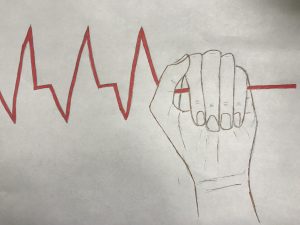
What is ALS:
Amyotrophic lateral sclerosis, more commonly known as ALS, is a progressive neurogenerative disease that affects nerve cells in the brain and spinal cord that control your muscles. With ALS, motor neurons in your brain and spinal cord begin to break down and die. When this occurs, your brain is no longer able to send messages to your muscles. This lack of muscle movements causes your muscles to become very weak and muscle atrophy ensues. ALS is particularly difficult for the individual as though ones body may physically be deteriorating, they individual remains mentally sound.
Onset:
In the onset of ALS, the symptoms are often overlook or misread due to them being so subtle in the beginning. The earliest symptoms may include:
• Muscle weakness
• Muscle twitches (fasciculations)
• Cramps and/or tight and stiff muscles (spasticity)
• Muscle loss and/or atrophy
• Slurred and nasal speech
• Difficulty chewing and swallowing
• Excessive choking
• Excessive shortness of breath
• Unintended weight loss
• Hand or leg weakness
• Problems with balance or walking
• Fatigue
• Diminished musculature between forefinger and thumb.
These complaints develop into a more obvious weakness, atrophy, or rigidity that may cause a physician to suspect ALS. The part of the body that shows the earliest symptoms depends on which muscles are affected in that particular individual. Many first see the first effects in the hands or arms and experience difficulty with basic tasks that require manual dexterity (buttoning a shirt, writing, turning a key in a lock). In other people symptoms can initially affect the legs. This can lead to awkwardness when walking or running or notice more frequent tripping to stumbling. When these symptoms first occur in the arms or legs, this is referred to as “limb onset” ALS. Other individual can notice their first changes in their voice and speech, spasms in muscle of the face, jaw, voice box, throat, tongue, and inappropriate, excessive laughing or crying. This is referred to as “bulbar onset” ALS.
Most people that develop ALS are between the ages of 40 and 70, with an average of age 55 with a diagnosis. ALS is 20% more common in men and your risk becomes higher as you age.
Treatment:
Like in neurological diseases, treatment cannot reverse damages that had already occurred, however, we can treat symptoms in an attempt to make lives for comfortable for those affected. Various drugs such as Riluzole, Edaravone, can help to slow the progression of the diseases. Individuals can also partake in various therapies such as breathing care, physical therapy, occupational therapy, speech therapy, and nutritional support.
End of Life Care:
End of life care becomes a relevant topic during late stage of this disease. Late stage is characterized by most voluntary muscles becoming paralyzed, including those used for breathing and swallowing. During this stage, a feeding tube or a ventilator are often necessary. Hospice is often recommended during this final stage of progression. This stage of life can be very painful causing many to be prescribed morphine. This is where the idea of physician assisted suicide becomes a very relevant topic of conversation.
http://alsworldwide.org/care-and-support/article/early-symptoms-of-als-mnd
http://www.alsa.org/about-als/facts-you-should-know.html